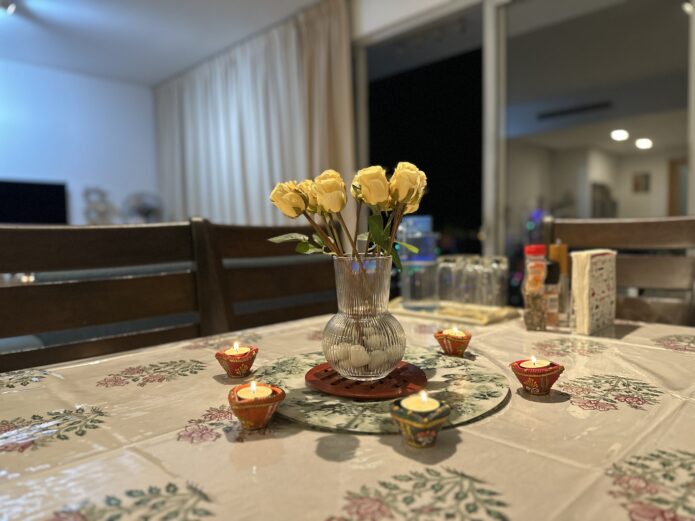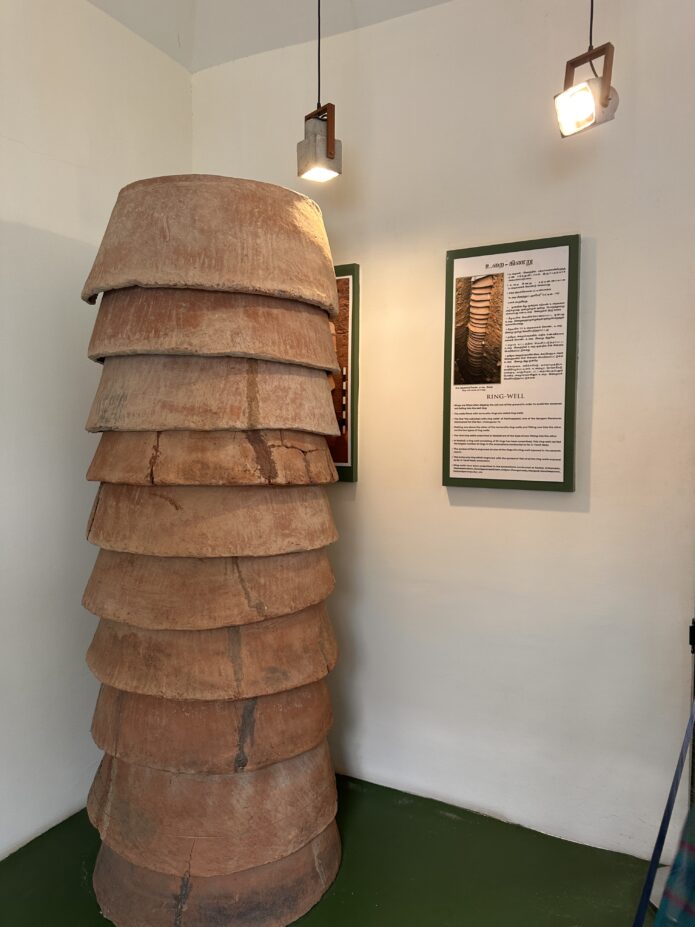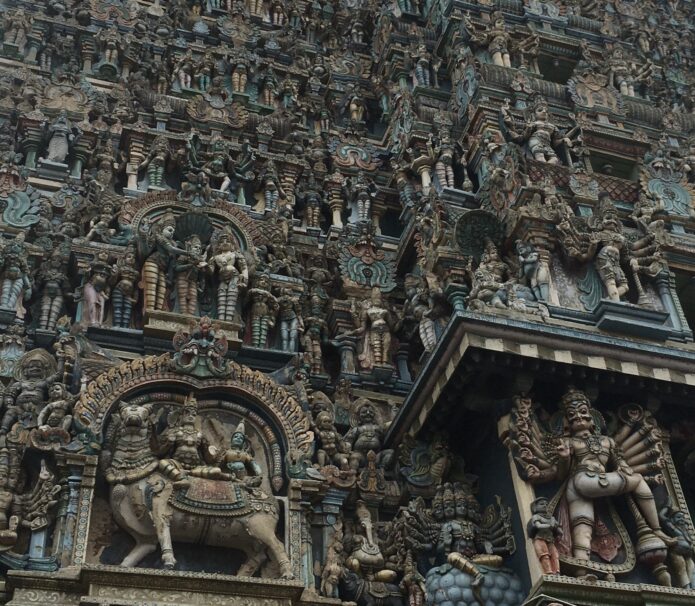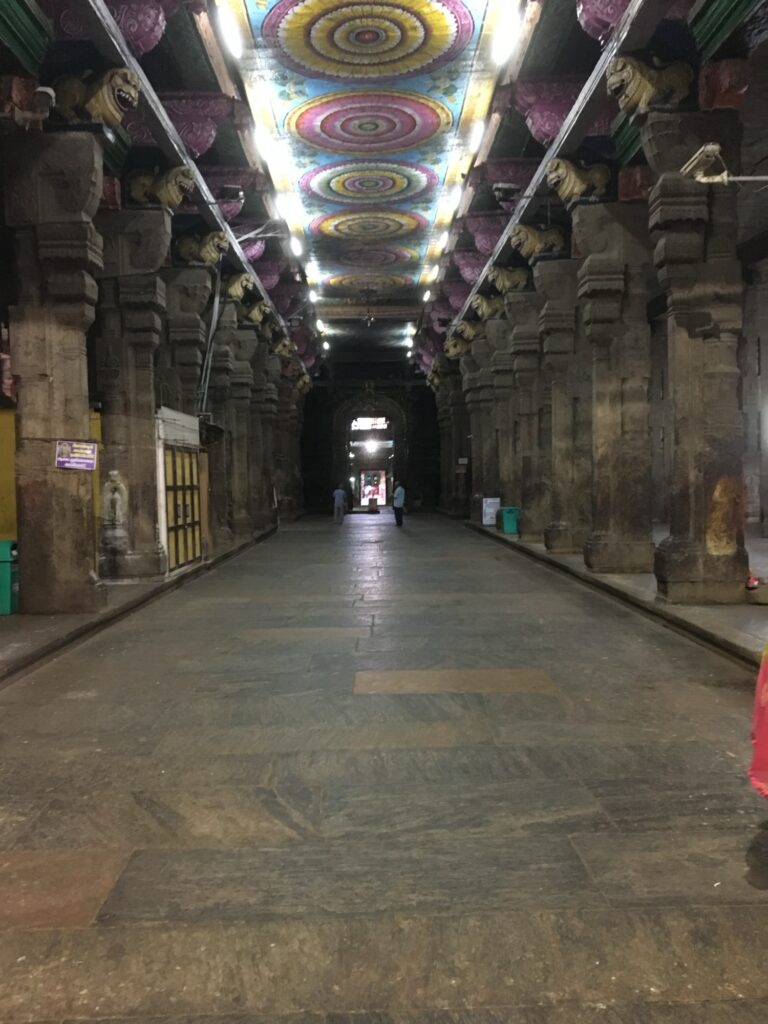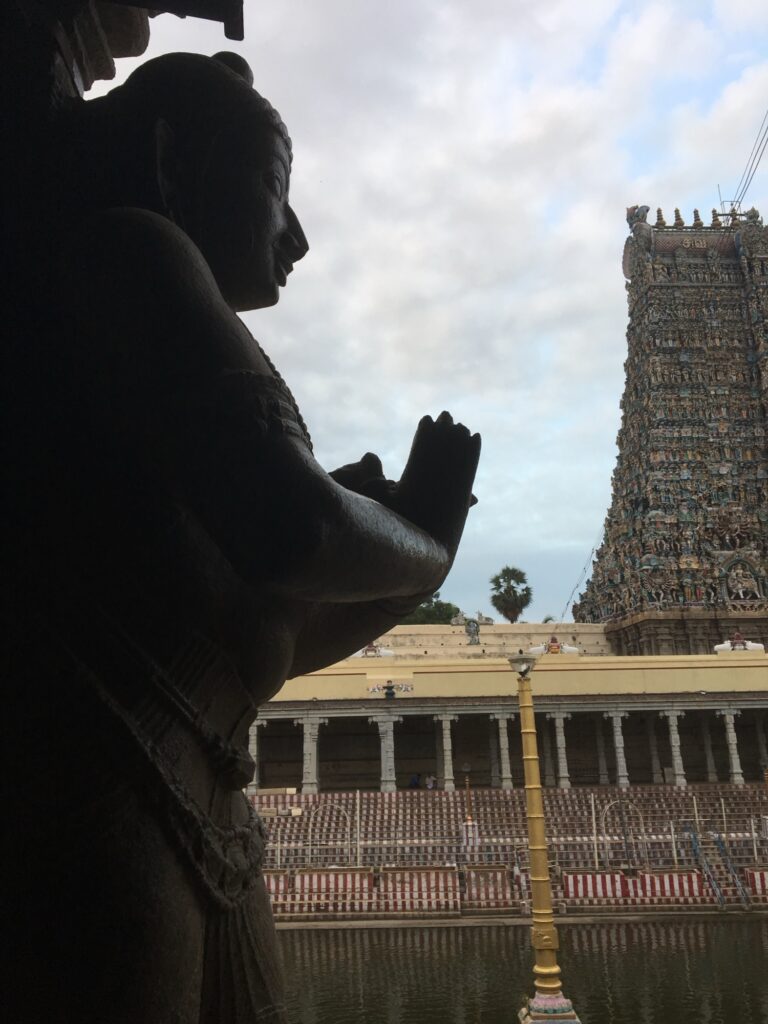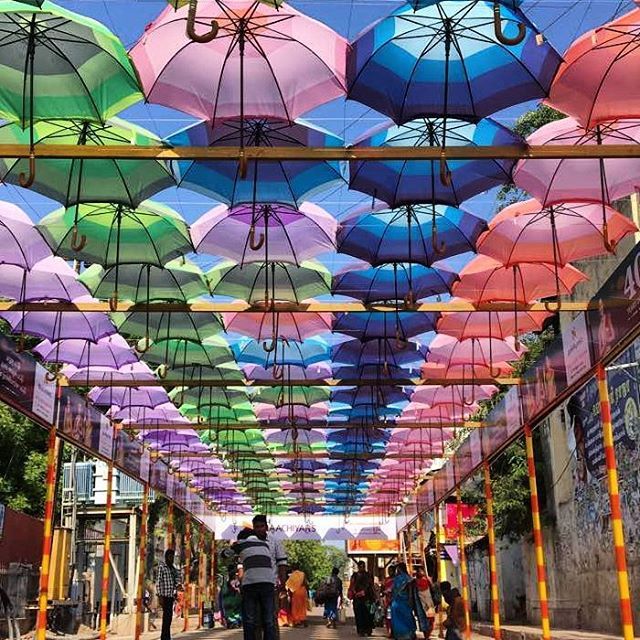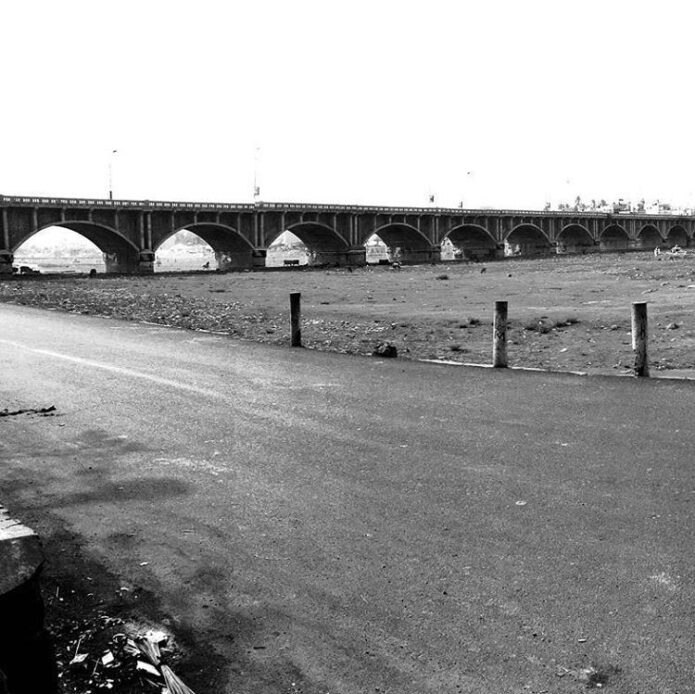The beach at Sayalgudi doesn’t announce itself. It appears, almost shyly. No signboard declares “Welcome to Paradise.” No resort gate opens grandly with a poor, uninterested labrador that is forced to sniff the car’s trunk. There’s just the soft hiss of waves, a ribbon of clean sand, and the faint scent of salt that tells you you’ve arrived somewhere that doesn’t know it’s special.
The sea stretches endlessly, its rhythm unhurried, uncurated. There are no shacks, no deck chairs facing the sea, no soft-serve ice-cream vendors. Just a moon already at work, waves rehearsing their eternal script, and one solitary visitor thanking his stars that, such beauty escaped some social media influencer’s attention!
I sat there for a long while, watching the sea nibble at the shore and retreat, as if testing the flavour of land. It was hard to believe that this was two hours from Madurai. Tamil Nadu’s coastline is vast and beautiful, and extends beyond the fame of the Marina, Pondicherry, and Kanyakumari.
The Road That Curves Away from Fame
Getting here is a breeze. You start from Madurai, drive towards Rameswaram, and somewhere after Manamadurai you slip off the highway. The road begins to twist, as if embarrassed by how small it has become.

On both sides stand seemakaruveli bushes — Prosopis juliflora, the invasive guest the British brought in the 19th century to tame wastelands. Now it rules the countryside like a green despot, spreading faster than gossip and just as hard to uproot.
Villages appear and vanish like punctuation marks. Abhiramapuram, Karisakulam, Athikulam, Allikulam and many more whose names blur in the rear-view mirror. Their kaapi kadais linger longer in memory: tin kettles boiling away gossip, glass tumblers with a skin of sugar on top.
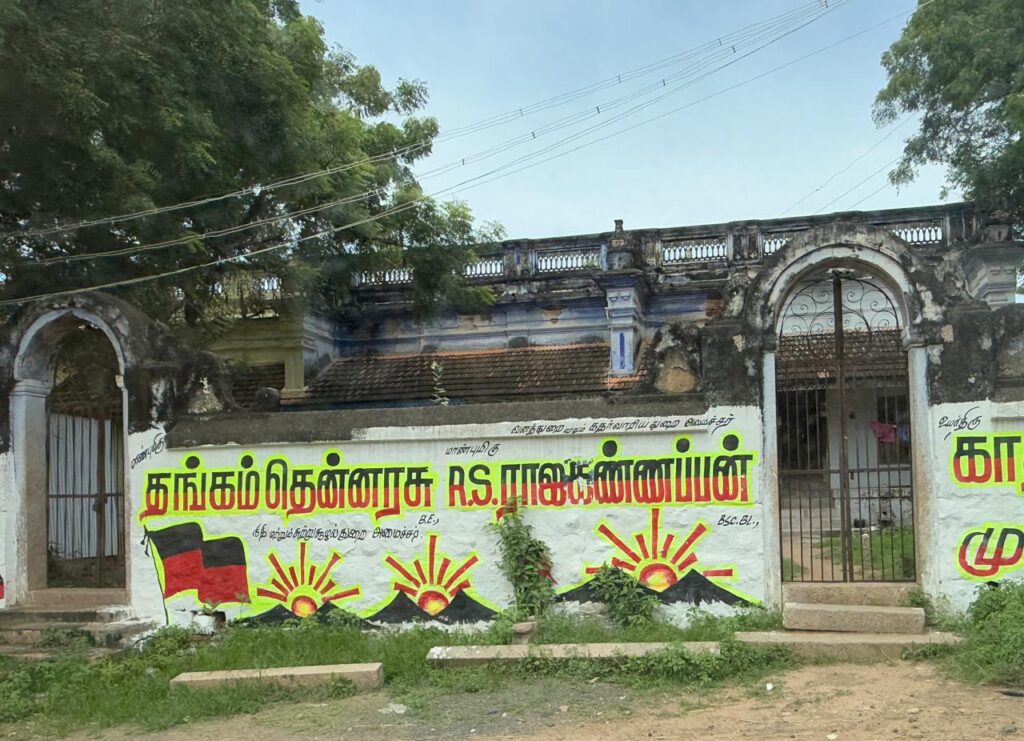
The walls along the way shout in red, black, yellow, white, and blue. Politics rendered in thick Tamil letters. In this part of the world, even plaster has opinions. A painted bull here, a rising sun there, two leaves somewhere else; campaign promises merging gracefully into art. Between two walls, a goat herd ambles across the road, his flock spilling into the highway with serene entitlement. He crouches by his TVS 50, adjusting something in the chain. They used to walk once, I think. Now even goats wait for engines.

A little further on, a man sells inji karuppatti. Ginger and palm jaggery. Packed neatly in olai kottans (palm-leaf baskets). I buy some. They’re sweet, fiery, and nostalgic all at once. Childhood condensed into sugar and spice.
A Trust in the Road
I often drive through rural Tamil Nadu with a quiet confidence that if anything were to go wrong, someone would appear. Not with a “How may I help you, sir?” but with a curious “Are you okay? Water?” People here don’t outsource kindness. It’s part of the day’s work, somewhere between lunch and the evening bus.
Over the years, I’ve been stranded by punctures, wrong turns, and delusionary optimism. Each time, a passer-by has stepped in, not only to do the needful — that tidy phrase from corporate emails — but to actually see what was needed. A word, a jug of water, a direction, sometimes just company until help arrived. Rural rhythms seem to cock a polite snook at the urban question of “What’s in it for me?” Here, the answer is often, “Nothing”. And that’s fine. Every time signing off with a “paathu poituvaanga.” Loosely translated to “stay safe and come back soon.”
A Town That Prefers Modesty
Sayalgudi itself sits quietly on the southeastern edge of Tamil Nadu, a town of about twelve thousand people and exactly zero pretensions. There are shops selling coconuts, rubber slippers, and recharge coupons. The fish market smells of honesty and ocean. It’s the sort of place where everyone seems busy but no one seems in a hurry.
You follow a narrow lane until the houses give up, and the sea fills the gap. The transition is so sudden it feels like the land has run out of sentences and switched to poetry.
People Who Stay Real
The “resort” I stayed at was more functional than fancy. A bed, an air-conditioner and a fan that coughed with commitment, and a window that framed the horizon. Hot running water. Clean sheets. A television that didn’t need to be turned on, because the best show in town was hosted by the sea. And luxury came from the sound of the waves.
Gopal, the manager, was a stocky man with a weathered Hero Honda and an even more reliable smile. Ajit, the chef, tall and thoughtful, made fish curries that could start conversations. And Jaya, the attentive housekeeping staff, had returned to the resort after dallying with other employers in the vicinity. All wonderful people. “It’s good to help people here,” she said softly, folding towels with care. “Only wish others are considerate too.” Who those “others” were, we left hanging in that polite ambiguity that some conversations excel at. Like a scene from a Mani Ratnam movie where silence does the explaining. And you fill in the gap in your own way.
They didn’t greet you with a scripted “Good morning.” They simply nodded, smiled, and said “Enna saar?” — “What, sir?” — half greeting, half check-in on your wellbeing. It was infinitely warmer than the mechanical, well-practised flow of a five-star resort employee. These folks were simple and authentic. Just like the sea. That’s all that mattered.
Stillness, the Unadvertised Luxury
By night, Sayalgudi changes tone. Fishing boats light up the horizon like a shy constellation. The lighthouse sweeps its beam with the discipline of a monk ringing a bell. The air fills with the sound of insects tuning up, and occasionally, a bird that hasn’t yet signed off.
It’s the kind of stillness Pico Iyer writes about: “The more ways there are to connect, the more we seem desperate to unplug.”
Here, you don’t disconnect as rebellion. You simply forget to connect in the first place. The signal flickers; the mind steadies.
I walk along the shore, barefoot, the sand cool and damp. Something sharp presses against my foot. For a moment I think it’s a broken beer bottle. A memory from a trip to Bali. But it’s a seashell, luminous under the moon. I slip it into my pocket, a small souvenir of an unadvertised paradise.
Abundance in the Unfamous
The next morning, Ajit serves dosai so crisp it competes with the waves. Gopal checks if the Wi-Fi has decided to exist. Jaya hums an old Ilaiyaraaja song as she sweeps the courtyard. Life goes on, entirely unbranded.
I think of all the famous beaches I’ve visited. Where the soundtrack is a mix of EDM, immaculate hotel staff and unbridled commerce. Corn. Coffee. Ice-cream. Beer. Horse riding. Whatever. Sayalgudi reminds me what a coastline really is: a conversation between sea and sand that doesn’t need an audience.
Paul Theroux once said, “Tourists don’t know where they’ve been; travellers don’t know where they’re going.” In Sayalgudi, both are forgiven. You just sit, let the waves do the talking, and measure time in tides.
A Small Philosophy Between Two Waves
The sea teaches quietly. Each wave arrives certain, crashes spectacularly, and dissolves without complaint. Watching them, I begin to think of work emails and deadlines that once felt as urgent as surf, until they receded. Maybe that’s what travel to places like this really does: it returns scale to things.
My phone vibrates — a reminder of a meeting, a plan, a project. I look at the screen, then at the moon tracing its silver loop above the water. Another wave rises, crashes, and fades.
“Tomorrow,” I tell the caller. Then add, “Actually, day after.” I hear the silence on the other side.
I add, “Please.” One more wave roars.
The wind approves. The sea keeps its counsel. Somewhere far away, a boat hums its way home.
I switch my phone to airplane mode. This time, I don’t want to buckle up like I otherwise would when I do that. Because, this time, I am not in a plane. I seem to have wings.
Other blogposts from this trip
1. Kaapi Kadai wisdom
2. The Fort That Forgot Its Kingdom



